Overland from Margate to Marrakech: An art-filled journey across France and Spain
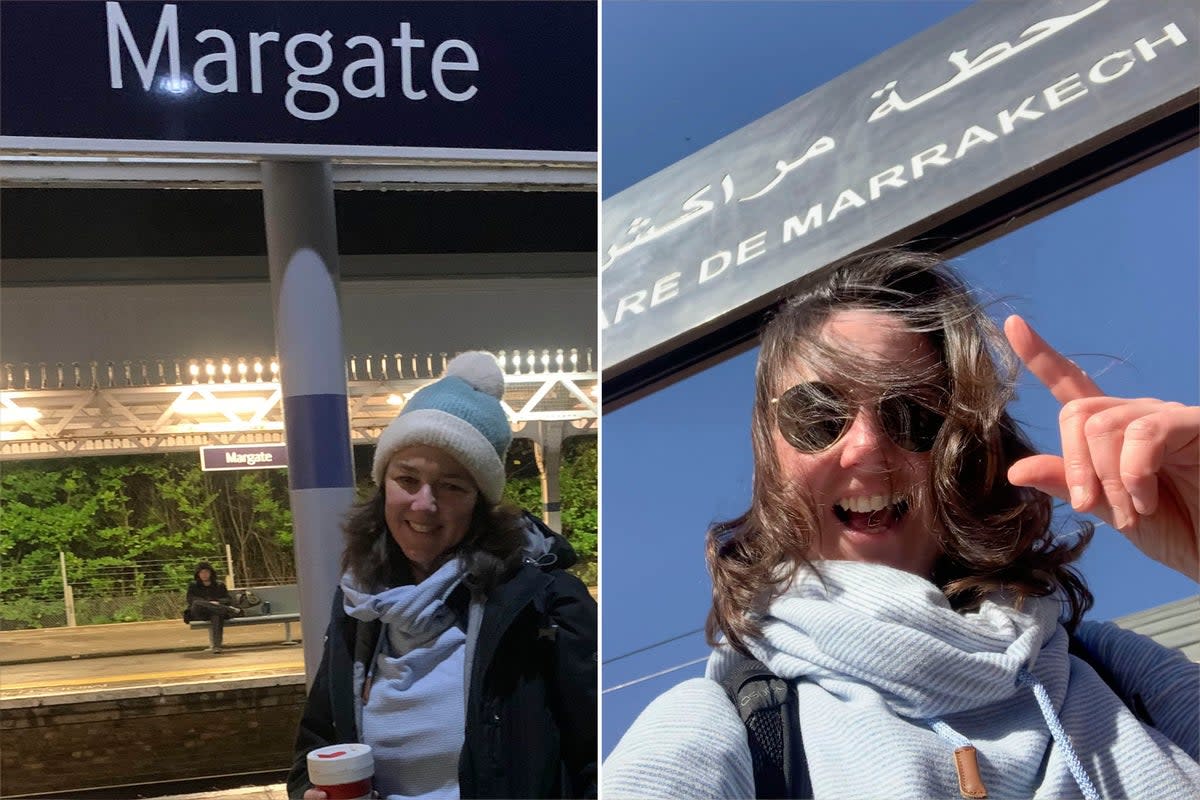
Walking along Margate seafront one evening as the colourful swash of another Turner-esque sunset melted into the sea, I began to plot my flight-free adventure to Morocco.
I usually work as a photographer, but I’d been remote working at a desk-based editorial job in an ever-lengthening contract all year and I’d saved up more than enough for a proper escape. I booked myself onto a cycling holiday and it began with a meet-up in Marrakech. I pondered, as I walked in that sunset glow, could I get there without flying?
I’d originally moved to Margate to live cheaply while finishing my MSc in environment and sustainability in late 2019 and I’d been talking the talk about flight-free and environmentally conscious travel for a while – it was now my turn to put it into action.
It’s about 2,000 miles between Margate and Marrakech and therein lies a multitude of options. To make the most of those precious few hours in each destination, I turned it into an art treasure hunt: Margate, famously, is home to the Turner Contemporary art gallery but, rather infamously, it doesn’t have any paintings by JMW Turner on display.
Many years previous, my undergraduate degree had been in art history and my formative travels were all themed around seeking out works by the artists I’d studied. This seemed like a good way to connect where I’d come from and where I was going.
My stop-off points would be other places that lay claim to famous artists: Vincent Van Gogh (Arles), Salvador Dalí (Figueres) and Pablo Picasso (Málaga) and see how they compare before heading onwards to Tarifa and the boat across to Morocco.
This is how the journey unfolded.
Day 1: Margate – Marseille
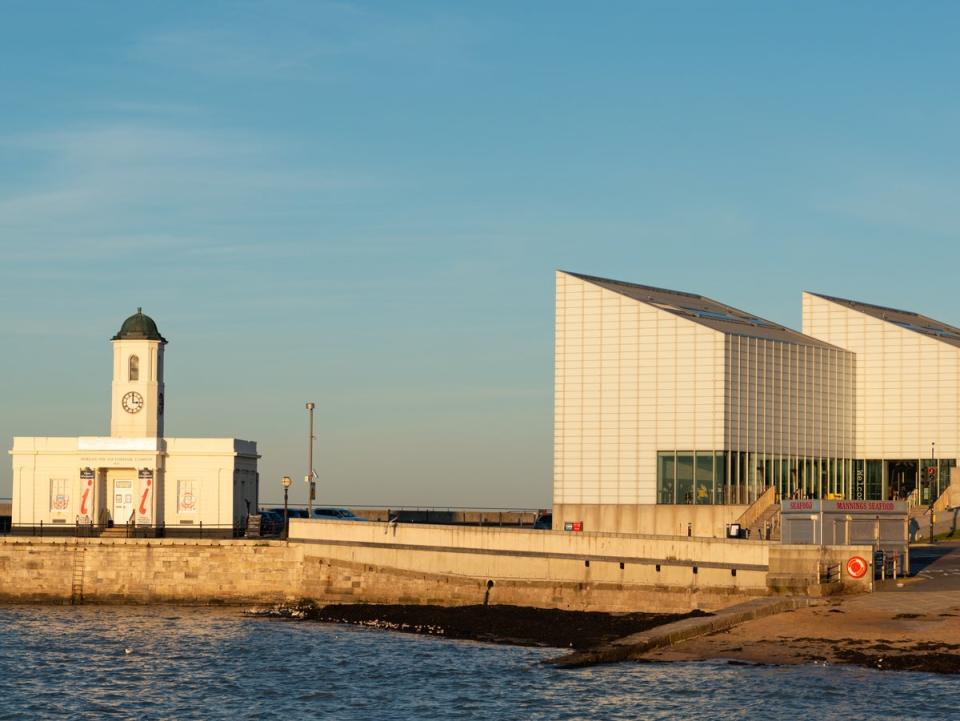
Long-distance rail travel is often prefaced with “romantic”. As I zipped across the hills and vales of Kent and agricultural flatlands of northern France, I realised “romance” requires a window seat. There’s nothing romantic about an aisle seat next to an almost window-less window seat. And there’s nothing “slow” about whizzing at top speed with all of France passing in a blur with tantalising glimpses of endless places ripe for exploration.
Three trains, 700-odd miles and Marseille was dripping in rain when I arrived, too late for most of the restaurants and bars. I was here only for a night’s sleep.
Where I stayed: New Hotel Le Quai, Marseille
Day 2: Marseille – Arles
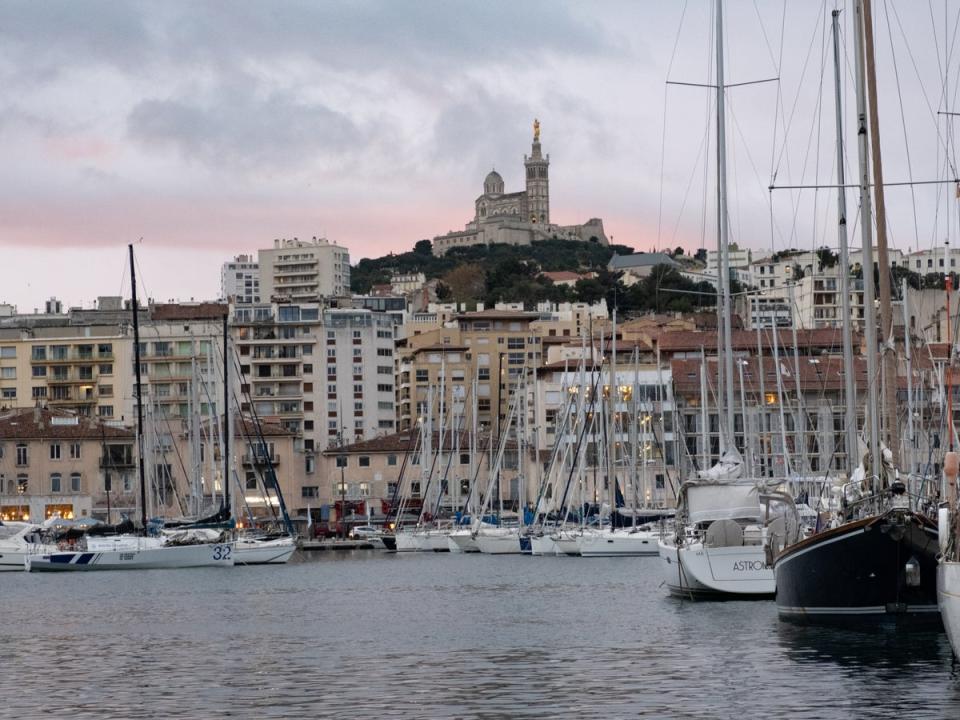
It’s just a half-hour train ride to Arles and, much like Van Gogh back in 1888, I arrived during winter. There’s a mildly dissonant sandy lightness to the landscape, despite the doom-like grey sky. The heavy industry of Marseille recedes and the rail-side vegetation tells of arid summers; firs, bamboo, even a few agaves on the rocky outcrops. The lands fill with fields of olives, vines, pretty farmhouses with elegant heavenwards cypress trees – modern life tacked onto a scene from a Van Gogh painting. I had a window seat for this journey. “Romance” is restored.
Arles and Van Gogh
“Just to let you know there’s only one Van Gogh painting on display in the gallery, but there’s plenty of other contemporary art to see.” the receptionist at Arles’ Fondation Van Gogh explained to me rather sheepishly, as if she’s encountered disappointed visitors one too many times. “Yep, just like the Turner in Margate”, I told her. She chuckled conspiratorially when I explained more. The gallery hosts contemporary exhibitions throughout the year, loosely based around specific themes this often incorporate one or two works by the gallery’s namesake.
These days Arles is more famous for Les Rencontres d’Arles, an annual photography festival. There were remnants of photography displays on colourful walls throughout the old city, silently encouraging me to return in the summer months when the festival is in full swing.
Where I stayed: Hotel Voltaire, Arles
Day 3: Arles – Nîmes – Figueres
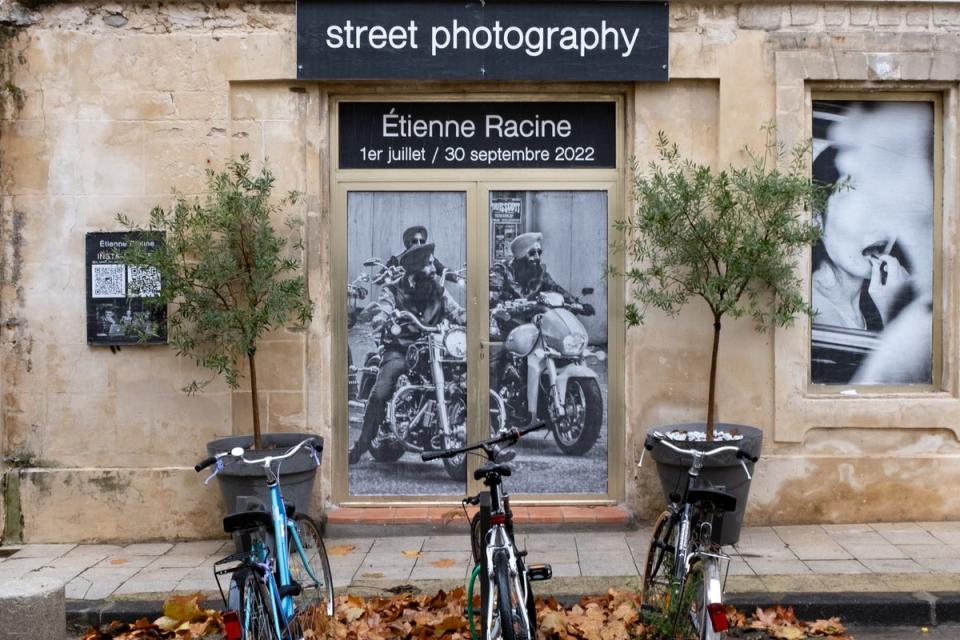
It’s a short hop to Nîmes followed by a comfortable TGV train ride to Figueres that glided along the sun-sparkled wetlands and coastal lagoons between Montpellier and Perpignan. I spied flamboyances of flamingoes and alluring long flat cycle paths between waterways. It’s not exactly clear when France becomes Spain but I marvelled at the geography of these natural borderlands and the sugar-dusted Pyrenees in the distance.
Figueres and Dalí
Unlike Van Gogh, Dalí was extremely successful in his own lifetime and returned to his hometown of Figueres in 1960 to work on his lasting legacy: the Theatre Museum. By the time of his death in 1989, the former theatre had been transformed into the surrealist dream and homage to his life and works it is today. I was in awe of his forethought, and it reminded me of the way Tracey Emin is currently transforming the arts landscape back home in Margate (except with much less narcissistic bravado and more pay-it-forward mentoring support for emerging artists).
One of the lower-floor galleries is chock-full of his early career paintings. It covers a spectrum of modern movements: from the cubism of Picasso to the impressionistic Seurat. Except they’re all painted by Dalí himself and they’re leaps away from the lobster telephone and melting clocks that spring to mind at the mention of his name.
Where I stayed: Hostal La Barretina, Figueres
Day 4: Figueres – Barcelona – Madrid – Málaga
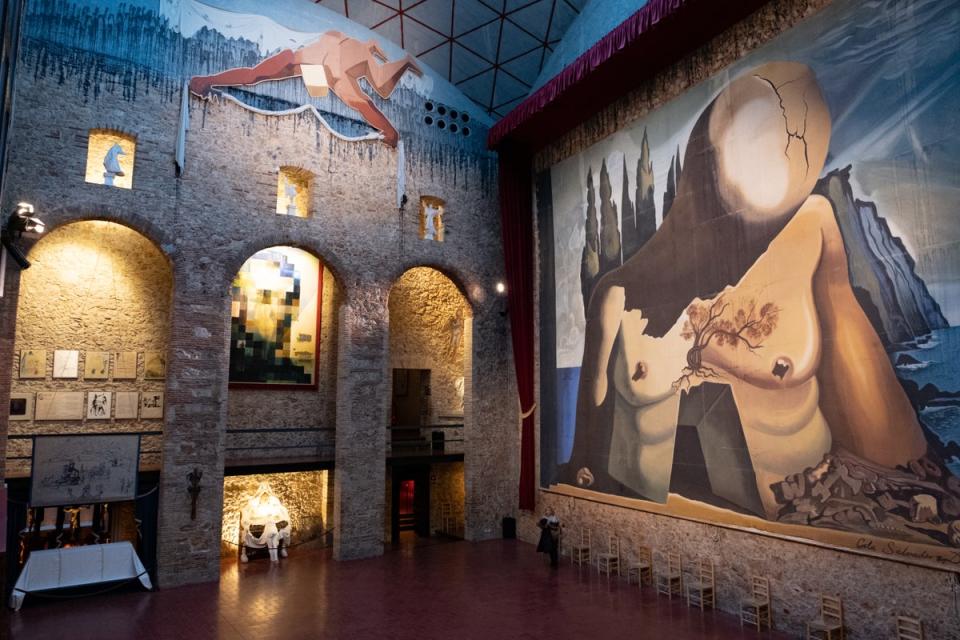
I didn’t have time to discover if there’s more to Figueres than Dalí as I was back on the high-speed and very comfy trains across the plains of Spain.
Málaga and Picasso
Picasso was born in Málaga and lived only the first 10 years of his life here. There are a handful of Picasso experiences on offer and I opted for the Museo Picasso. Thankfully, his extremely prolific output means there are plenty of artworks to see here in an in-depth overview of his career, era by era. I was particularly taken with the little ceramic owls he made towards the end of his life.
Of course, the gallery display neatly sidesteps any of the grislier truths about some of Picasso’s, predilections, liaisons and family dramas. But that’s where filling up the iPad with documentary downloads kept me on-topic during those oh-so-very long train journeys and provided great counterpoint to the celebratory tone of the exhibitions.
Where I stayed: easyHotel
Day 5: Málaga – Tarifa
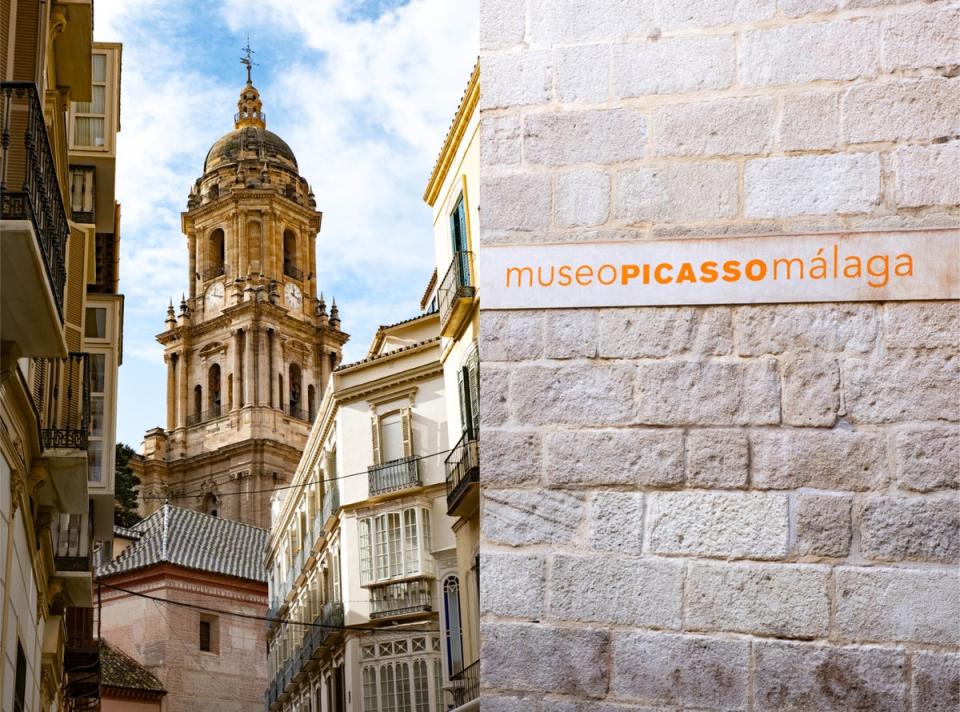
Although that was it for my forays into art, I was surprised an artist movement hasn’t yet established itself in Tarifa; wandering along the causeway between the calm Mediterranean Sea and the wilder Atlantic Ocean, I was awed by the beguiling painterly light that no camera sensor will adequately capture. It’s not just the light making this moment feel spine-tingling special: from here I could see Morocco. I could see it during most of the bus journey from Málaga, too. It’s only 20 miles across the ocean and I was surprised to learn that’s six miles less than the distance between Dover and Calais. There are plans for a tunnel here to connect Spain and Morocco in 2030.
Where I stayed: Vagamundos
Day 6: Tarifa – Tangier
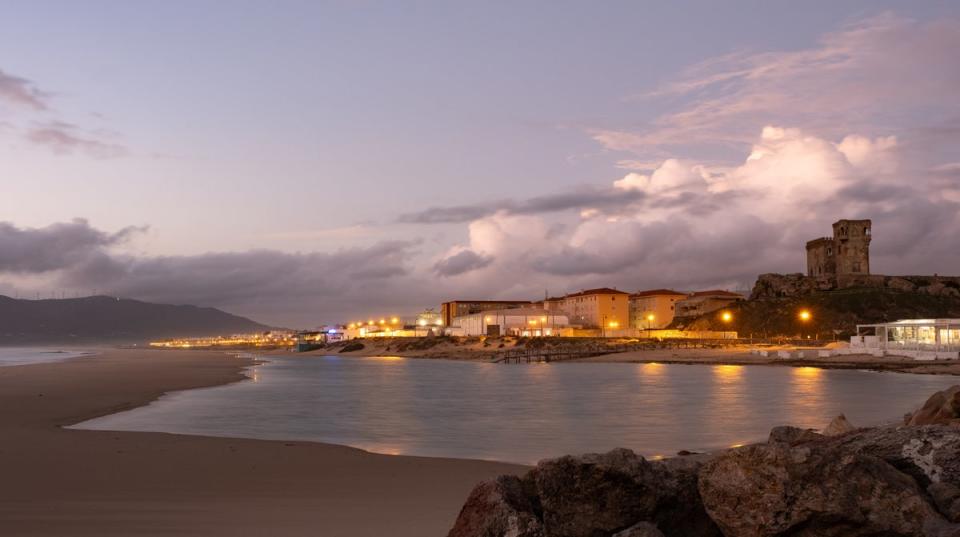
Despite being the shortest leg of the trip (just over an hour by boat across the Strait of Gibraltar), psychologically, it’s the biggest – I was leaving Europe for Africa. With the gentle rock of the boat, it finally felt like the slow, contemplative travel I’d been seeking. Despite the squally rain, the calm blue waters seemed liminal and otherworldly, not just the meeting of land and sea, but like an inter-space between two worlds.
Passport control was on the boat which meant that, once docked in the port of Tangier, I calmly sashayed off, greeted by the call to prayer and unusual birdsong in a calm reverie so different to the airport scrum of plane travel.
The tension of the previous days’ rapid travel evaporated and I whiled away some hours nibbling pastries in the Parisian-style tea houses and seafood dinner at an unassuming hole-in-the-wall restaurant Saveur de Poisson.
Where I stayed: El Muniria
Day 7: Tangier – Marrakech
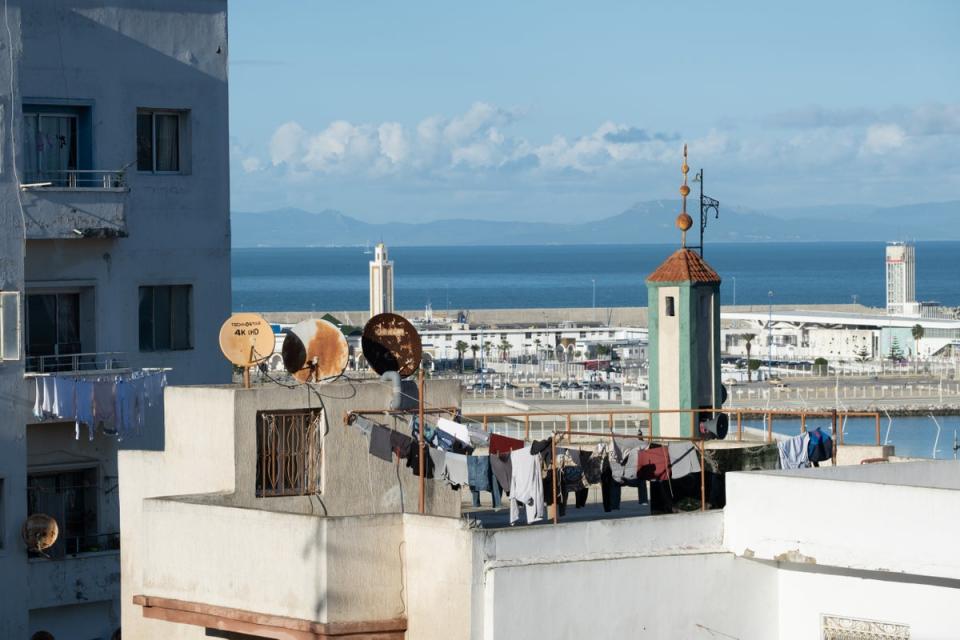
The sky turned from the electric blue of dawn to a yellow-peachy early morning blend, as I walked among the tall white-washed buildings to the ultra-modern Tangier station.
The high-speed route from here to Casablanca goes through woodlands and fertile fields of mixed crops. I changed trains for a slightly less plush one and the eucalypts outside were replaced with palm trees, the crops by parched, denuded earth with goats snuffling and power lines on matchsticks criss-cross the barren landscape.
Gradually the pink bindings of Marrakech’s urban sprawl overtook the land and I knew my journey was nearly done. A smile of elation grew across my face as we slowly pulled into Marrakech railway station and my epic journey came to an end. Seven days across France, Spain and Morocco – from Margate to Marrakech – without getting on a plane or in a car.
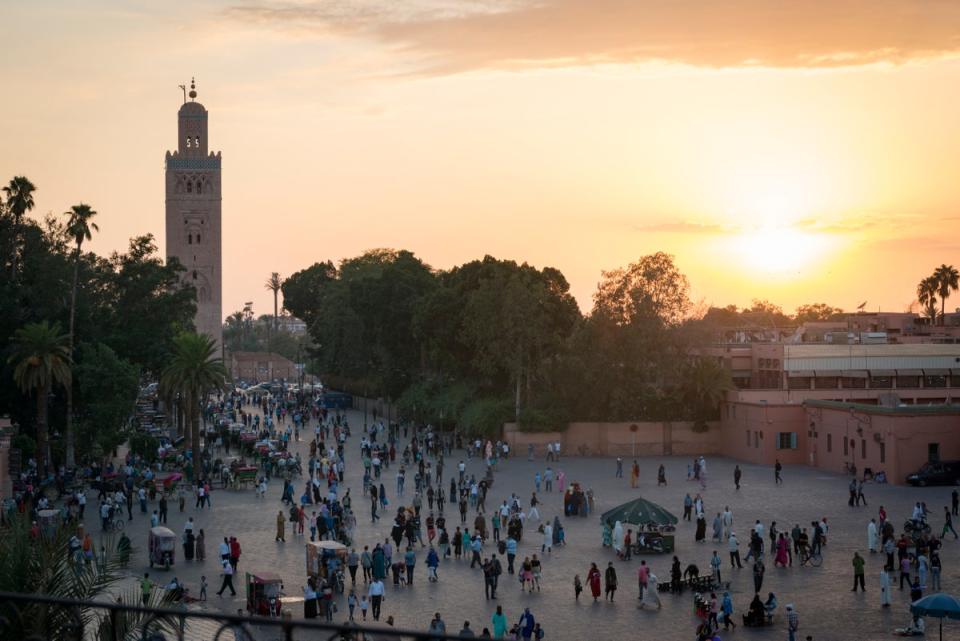
How I did it
I used Interrail Planner to establish available routes. Although I initially considered a bespoke journey with concierge back-up via Byway or buying separate tickets for each leg from the individual rail operators, it was the seven-day Interrail pass that proved to be the most cost-effective, flexible and user-friendly with the ticket and add-on supplements all based in an app on my phone.
I used the Booking.com app to book accommodation while en route which, in December, was easy to find in suitable locations between the station and galleries.
The total cost of the trip was £991.02, which breaks down to £466.14 on transport, £315.74 on accommodation, £175.49 on food (including coffee and snacks) and £33.56 on art gallery admissions.


